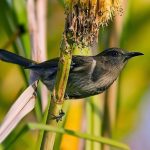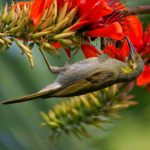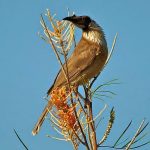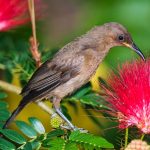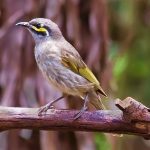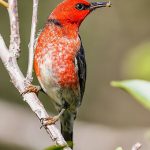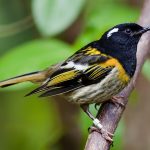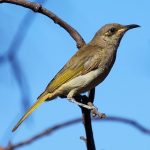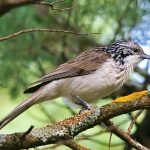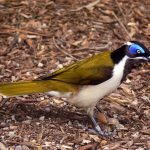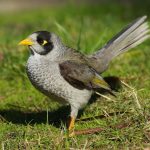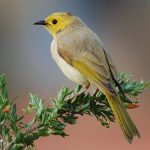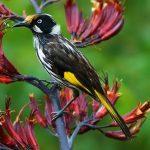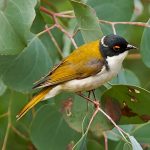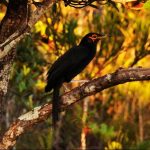Eastern spinebill
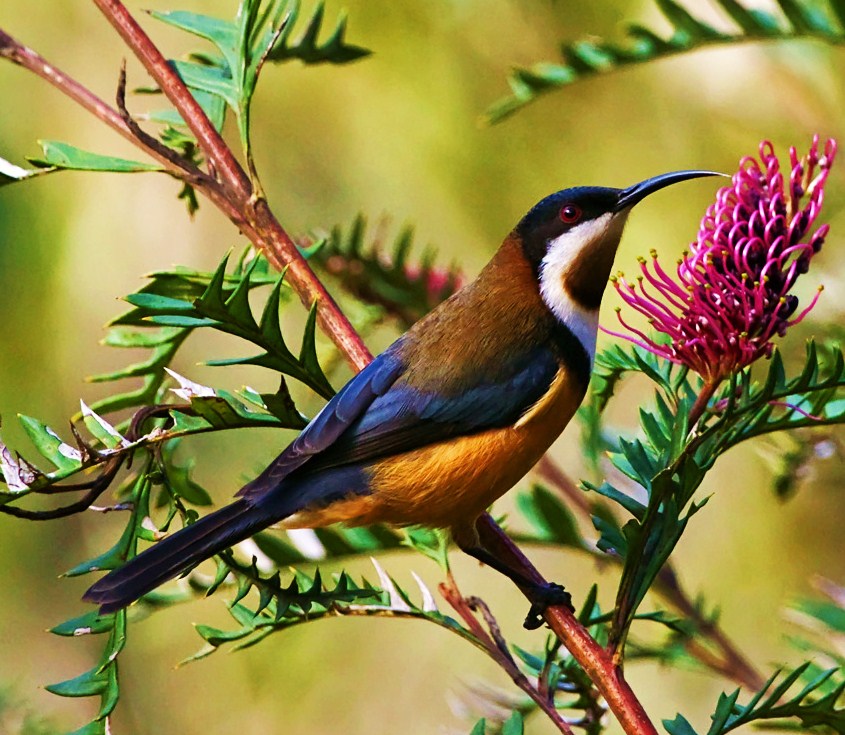
Acanthorhynchus tenuirostris
Common name:
eastern spinebill (en); melífago-oriental (pt); méliphage à bec grêle (fr); picoespina oriental (es); rotnacken-honigfresser (de)
Taxonomy:
Order Passeriformes
Family Meliphagidae
Range:
This species is found in south-eastern Australia, east of the Great Dividing Range from Cooktown in Queensland to the Flinders Ranges in South Australia. They are also present throughout Tasmania.
Size:
They are 13-16 cm long and weigh 11 g.
Habitat:
Eastern spinebills prefer dry sclerophyll forests, scrubland and heathland. They are also common in urban gardens, even in large cities like Sidney and Melbourne.
Diet:
These birds feed on the nectar of many plants, including the blooms of gum trees, mistletoes Amyema spp., Epacris longiflora, common heath Epacris impressa, Correa reflexa, and various members of the Proteaceae such as Banksia ericifolia, Banksia spinulosa, Banksia integrifolia, Lambertia formosa and Grevillea speciosa, as well as exotic plants such as Fuchsia. They also eat small insects and other invertebrates.
Breeding:
The eastern spinebill breeds in August-January. The female builds the nest, consisting of a small cup of twigs, grass and bark, combined with hair and spider’s web, built in a tree fork, generally 1-5 m above the ground. The female lays 2-3 whitish spotted eggs, which she incubates alone or 14 days. Both parents feed the young, which fledge 14 days after hatching.
Conservation:
IUCN status – LC (Least concern)
This species has a large breeding range. The population size is yet to be quantified, and is suspected to be in decline owing to ongoing habitat destruction. Still, this species is not considered threatened at present.

